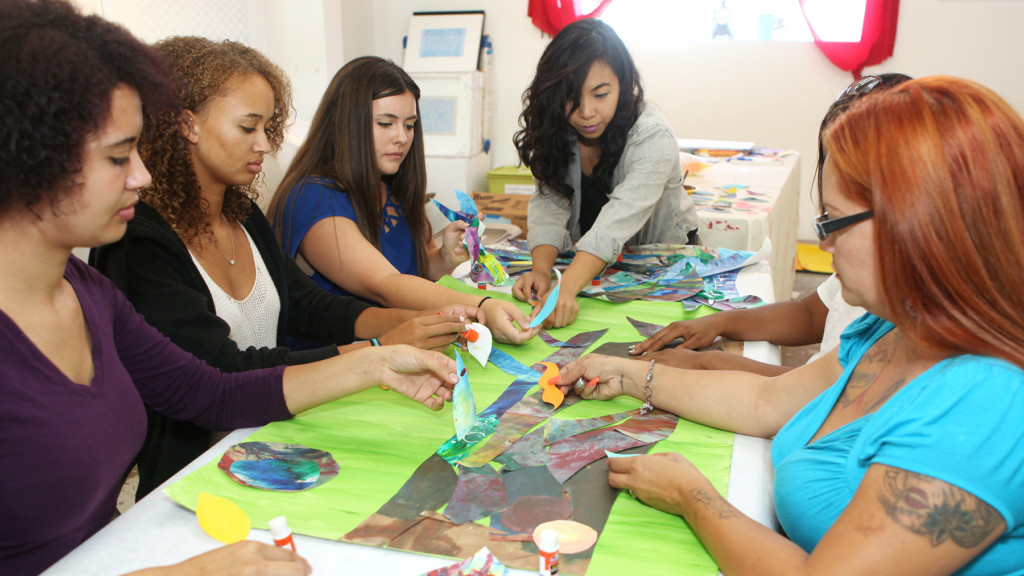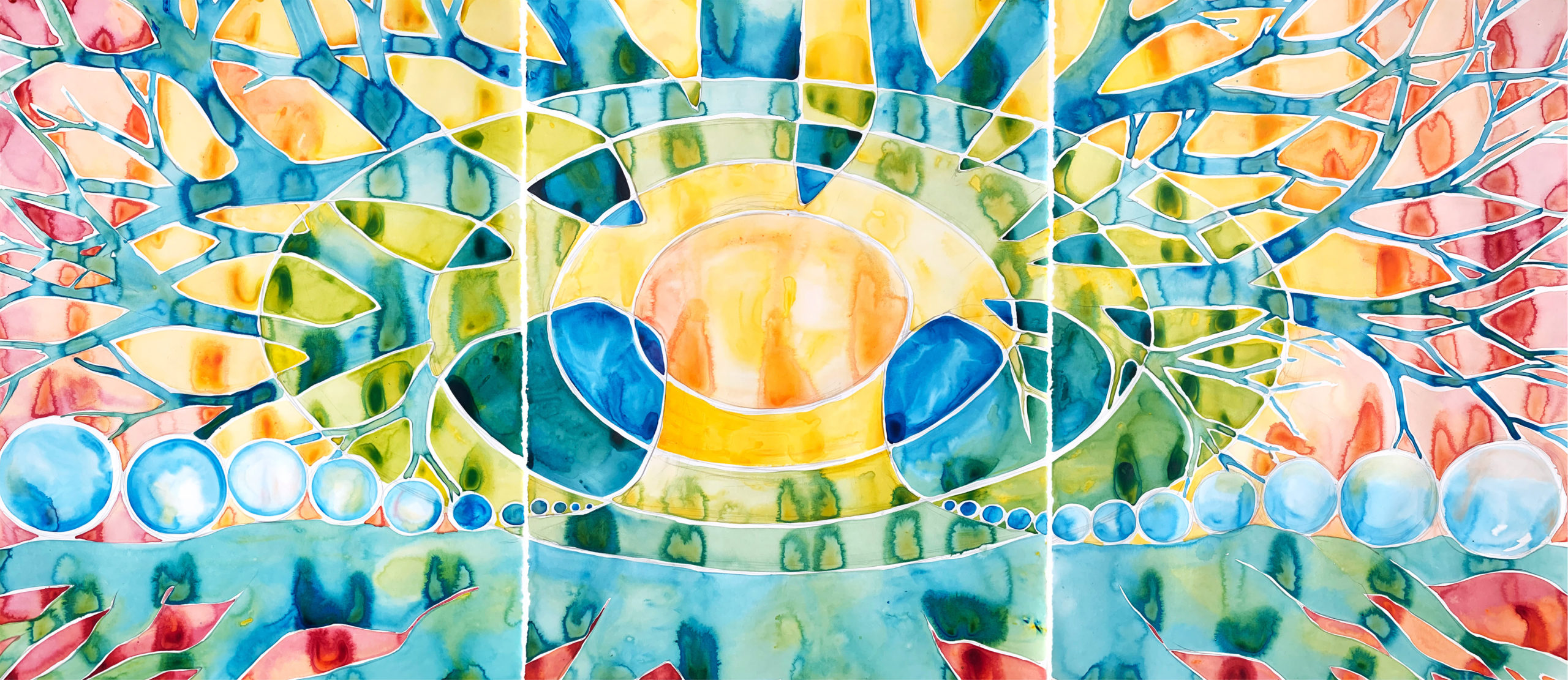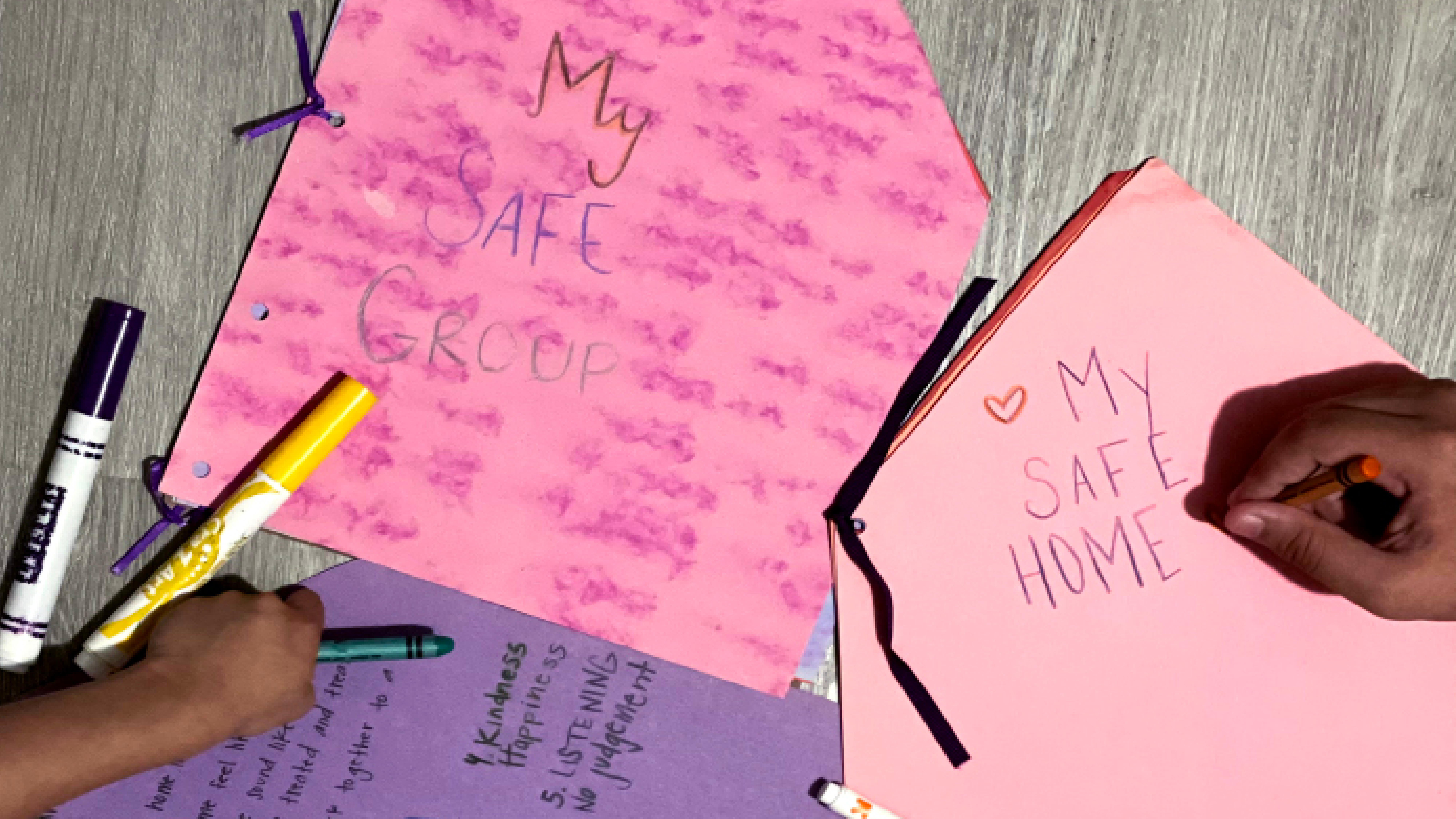by Jenny Barbosa
Prevention Specialist
WomenShelter of Long Beach (WSLB)
Long Beach, California
I was first introduced to AWBW many years ago as a participant and I never imagined I would have the opportunity to facilitate the workshops myself. Years later, I began working with youth impacted by domestic violence and cannot imagine myself doing anything else. I fell in love with this work, particularly connecting with young people who witness violence in their own home.
Research shows that children exposed to violence in the home are themselves victims of physical abuse, which puts them at serious risk for long term physical and mental health problems.
Oftentimes, youth experiencing abuse have difficulty defining what a safe home means to them. The supportive services that we provided included a 16-week program that helped children and youth learn appropriate terminology to better understand what they had witnessed and to label and express their feelings. They learned about healthy and unhealthy behaviors and how to unlearn (the latter) by adding new tools to their toolbox. In addition, the program provided an opportunity to learn various feeling words in order to describe different emotions and alternatives to violence when dealing with conflict.
In the groups, youth struggled with finding the right terminology to express themselves and what they were feeling. This included expressing emotions, such as anger, in unhealthy ways. Our sessions incorporated discussions relating to different feelings and what safety meant to them.
In our 7-9 age group we had a child who was a witness to a lot of abuse in his household. As a result, he believed that certain unhealthy behaviors were normal and acceptable, such as insulting others when feeling angry. We facilitated the My Safe Home AWBW workshop with this group and after providing suggestions on how to go about the workshop, I noticed that this child kept looking at his paper and seemed unsure of what to create. I invited everyone in the group to discuss what a safe home may look, sound or smell like, and I heard the child share that he didn’t know what that looked like. I welcomed the child to create whatever he wished including doodling on his paper. Afterwards we discussed what a safe home should look like and that no one should ever feel afraid. When we moved into the sharing portion of the workshop, the child was intrigued by what everyone was sharing and had a look of confusion in his face. This group discussion helped the children understand and define safety and what that may look like for them. At the end of the group, we let the children know that no matter what situation is currently happening, nobody is deserving of any type of abuse.
Later, the child’s mother shared that the art workshop sparked a conversation at home about what a safe home was and what that meant for her child. The workshop led him to speak up to his mother and express to her why he was feeling unsafe. He also understood that even if someone is a loved one it did not mean that they could hurt others. After some time I witnessed a change in this child – he went from expressing that violence was an acceptable way to solve problems to voicing alternatives when feeling anger, which also helped to open up lines of communication with his mother.
My Safe Home is one of my favorite art workshops to facilitate with children and youth because it can be modified to fit various facilitation settings such as My Safe Group, or My Safe Classroom. It brings attention to the importance of providing youth with a safe space to express and understand that even in unhealthy environments we have the ability to bounce back and recreate what the word “safe” means to us.
Children aren’t inherently violent; violent expression or behavior is a result of their environment. Research shows that children exposed to violence in the home are themselves victims of physical abuse, which puts them at serious risk for long term physical and mental health problems.
AWBW workshops provide survivors with opportunities to express their inner emotions through creating art without worrying about it being perfect. When youth and children experience trauma, it can be difficult to put in words what they are feeling and they often shut down. The art workshops create a space for survivors to express what is going on internally when they may not be ready to speak about their experiences.
by Jenny Barbosa
Prevention Specialist
WomenShelter of Long Beach (WSLB)
Long Beach, California
Being out of our routines and dealing with the constant stream of information about this ever evolving pandemic can disrupt our sense of safety and control.
What makes you feel safe at home? It is different for each of us. This workshop is designed for individuals and families to creatively explore what their safe home looks, feels, sounds, and smells like. Your safe home creation can serve as a reminder of the various things you can do to help yourself feel safe while home.
Also, sharing your creation with people you live with is a great way to spark a conversation around any conflicting needs between people in the home, giving you a way to work together to find balance while meeting everyone’s unique needs.
Download the Safe Home PDF in English Descargue el PDF de Hogar Seguro en Español
Want to bring healing art programming to your community?
Attend a Training
A Window Between Worlds (AWBW) supports hundreds of direct service organizations across the country to incorporate creative expression into their work with trauma survivors. With this blog we uplift the voices of our art workshop facilitators and participants. We invite you to take in this perspective, notice what resonates and explore how it may fit into your life.





